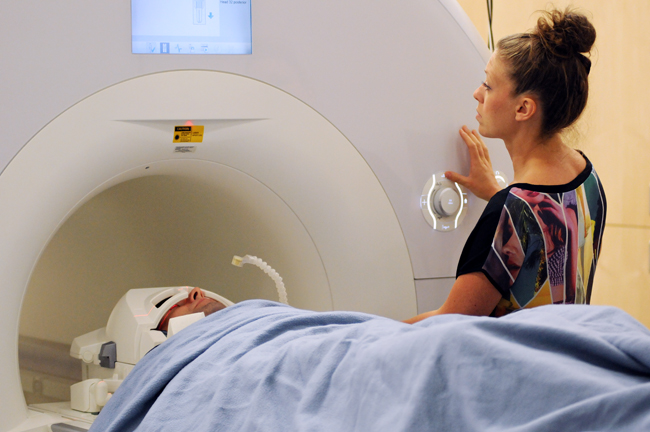Many people weigh themselves and track what they eat, but neurobiology professor Russell Poldrack studies himself in an in-depth way no one has done before in his quest to learn how a healthy brain functions daily.
His study consists of a weekly blood sample and two MRI scans per week paired with mood questionnaires, according to Poldrack. Poldrack said he also completes daily surveys measuring aspects such as sleep quality, diet and what happened that day. Poldrack said he began data collection in September 2012 and plans to publish his results in the fall.
Poldrack said he tracks the fluctuations of his psoriasis and has found that on days he recorded it being worse, the genes related to psoriasis are expressed more.
“Even though this is really preliminary, it starts to show us the kinds of stuff that we might be able to find,” Poldrack said. “The question is if we had enough data could we relate this back to brain function, too.”
There is no research on how brains change over a period of weeks and months, and because some disorders, including depression, fluctuate over this period, people with these disorders could get scanned regularly to measure which treatments work, Poldrack said.
Poldrack stopped getting MRI scans in March because the noise from the scans worsened his tinnitus. He said he plans to resume scanning this week, although he will decrease the number and duration of his scans, because Poldrack will stop measuring some things, such as brain structure, that probably won’t change.
One of Poldrack’s colleagues, Tom Schonberg, said that his research receives some criticism.
“[His colleagues] try to plant the seeds of doubt and criticism all the time because when it’s out there scientifically, when he reaches the stage of trying to publish this, he’ll get criticism from all directions,” Schonberg said.
Poldrack said although it will be challenging to find people willing to participate, he wants to do the study on a large set of people.
Not only is this data the first of its kind, but it also has some very unique uses. For example, Austin artist Laurie Frick, who creates work based off measurements and self-tracking data, said she will use the results of Poldrack’s study to create pattern-based art.
“I’m sort of having this idea that maybe you could really come up with a more holistic portrait and think about what that data adds up to,” Frick said.
Poldrack said he may not have the funds to analyze a year’s worth of blood samples, which show how gene levels relate to what is happening in the body, because it costs $700 to analyze a week’s worth of blood.
“If we could find the money … then we could go back and do it,” Poldrack said. “It would be a really unique data set. I don’t know of any other data sets of a person who collected blood at the same time every week for such a long period of time.”


















